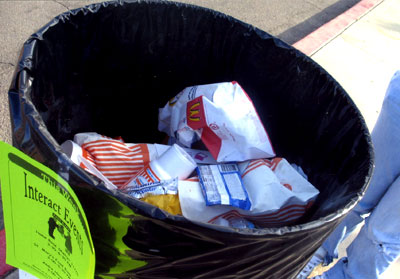All Nonfiction
- Bullying
- Books
- Academic
- Author Interviews
- Celebrity interviews
- College Articles
- College Essays
- Educator of the Year
- Heroes
- Interviews
- Memoir
- Personal Experience
- Sports
- Travel & Culture
All Opinions
- Bullying
- Current Events / Politics
- Discrimination
- Drugs / Alcohol / Smoking
- Entertainment / Celebrities
- Environment
- Love / Relationships
- Movies / Music / TV
- Pop Culture / Trends
- School / College
- Social Issues / Civics
- Spirituality / Religion
- Sports / Hobbies
All Hot Topics
- Bullying
- Community Service
- Environment
- Health
- Letters to the Editor
- Pride & Prejudice
- What Matters
- Back
Summer Guide
- Program Links
- Program Reviews
- Back
College Guide
- College Links
- College Reviews
- College Essays
- College Articles
- Back
Waste and Plastic Pollution
The U.S has reached a point where it has become the second country to manufacture the most plastic and one of the top ten countries to produce the most waste. Although some realize that waste and plastic pollution causes various issues in today's world a majority either don't know how to prevent this issue or they simply don't care. Humans have developed a diverse number of ways to reduce the amount of plastic and waste created, such as the zero waste lifestyle, a movement to reduce the amount of waste and plastic sent to landfills. By learning or taking small steps towards a zero waste lifestyle countries gain the ability to reduce the enormous quantities of toxic plastic and waste produced on a daily basis.
Waste and plastic pollution currently causes an overwhelming issue of ocean pollution, which harms our marine life. Researchers show that an average of about 4.8 to 12.7 million tons of plastic enters our ocean each year. (earthday). The accumulation of plastic and waste has led to five massive patches of plastic in the ocean one being the Great Pacific Garbage Patch. As a result of this, it's predicted that by 2050 more plastic will end up in our ocean than fish (by weight).(earthday) Organisms such as seabirds, fish, sea turtles, and other sea mammals mistake plastic debris for actual food which can later lead to starvation or suffocation. In the end, a zero waste lifestyle will potentially reduce the amount of plastic sent to oceans, lowering the number of animals harmed by plastic pollution.
Within the past few years, the U.S has produced an average of 254 million tons of waste. Only 87 million tons of waste gets recycled and composted. (archive.epa) The U.S has also produced an average of 300 million tons of plastic per year. (plasticoceans). Plastic and waste pollution also has a huge effect on humans and the environment. BPA, is toxin that threatens public health. Over the years, BPA can break down and enter our bodies in various ways either through contaminated water or through the consumption of contaminated fish. Waste has led to the formation of about 3,091 active landfills and about 10,000 old landfills (zerowatseamerica). Landfills pollute groundwater, creating toxins affecting Earth. Landfills can also cause an increase in vermin, which leads to respiratory illness. If everyone cooperates the number of landfills created can diminish.
The main solution to this problem is a zero waste lifestyle which helps the environment. Steps that could lead to a zero waste lifestyle include buying in bulk, meaning to bring containers and reusable produce bags to package belongings.A large amount of waste originates from food waste. A way to reduce food waste is through composting, by placing food scraps and letting them decompose with the help of bacteria which creates a natural fertilizer. Amazing alternatives exist for a variety of single-use items. For instance, stainless steel or glass bottles are both recyclable and reduce the number of plastic bottles. Stainless steel straw or bamboo straws create an alternative to plastic straws. Other alternatives include bamboo toothbrushes, mesh produce bags, reusable food wraps and many more.
It's not required to jump right into a zero-waste lifestyle, but by applying zero waste methods into our daily lives waste and plastic pollution can reduce. Humans have caused issues from ocean pollution, landfills, and air pollution. However, the majority of the harm caused would disappear or at least minimize if people were more cautious of their actions. Plastic and waste pollution can’t just be put to the side, and pretend it is not occurring because if action is not taken it will become too late to rescue Earth from what humans have caused.

Similar Articles
JOIN THE DISCUSSION
This article has 0 comments.

This essay explains the results of plastic and wastebasket pollution and it also involves a solution to this problem.